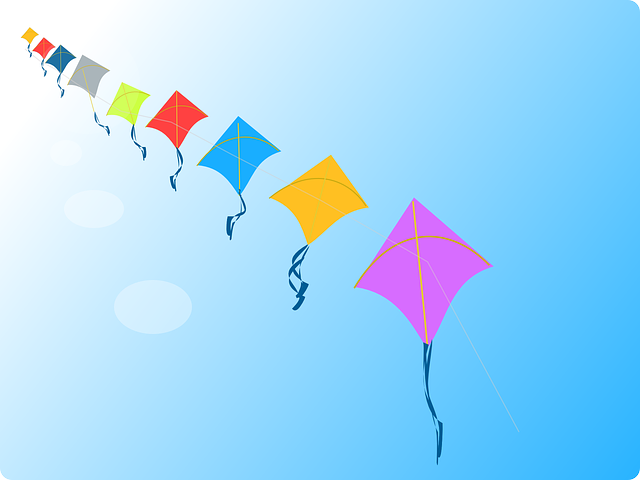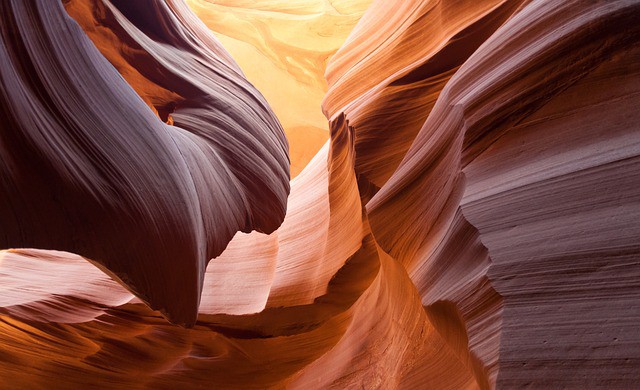What are the Winds, How Do They Form and Types of Winds?

Wind can be defined as air currents or moving mass of air from high-pressure areas to low-pressure areas. Typically, air under high pressure normally moves towards areas under low pressure. Thus, the greater the pressure difference, the faster the flow of air which creates moving air with a considerably strong force. The bulk movement of air occurs in the earth’s atmosphere and outer space as well.
In meteorology, winds are defined based on their strength and direction. Short and violent high-speed winds are known as gusts while strong winds over extended durations are known as squalls. Highly violent and longer-duration winds are linked to various names such as storm, gale, and hurricane. The pressure difference arises due to temperature changes and varying climate zones across the planet.
The rotation of the earth is also a significant contributing factor as it brings about what is termed as the Coriolis Effect. Wind is an important agent of seed dispersal. Contrariwise, strong winds can cause major destructions to buildings and plants, the spread of wildfires, and leads to soil erosion.
According to Weatherwizkids,
“Wind is air in motion. It is produced by the uneven heating of the earth’s surface by the sun. Since the earth’s surface is made of various land and water formations, it absorbs the sun’s radiation unevenly. Two factors are necessary to specify wind: speed and direction.“
How Do Winds Form?
Winds are formed by moving air masses that begins right from the sun’s radiation. When the sun hits the land, the heat is absorbed variedly on the surface of the earth. This is because of the differences in land surface cover such as water bodies, valleys, plains, vegetations, mountains, cloud cover and desert regions.
As the sun’s radiation unevenly heats the land, the air above the surfaces warms up and starts to rise because it becomes less dense. As the air rise, low atmospheric pressure is created. As a result, the air with cooler temperatures sink and the sinking continues to create higher atmospheric pressure.
This creates what is commonly called convectional currents. Convectional currents result when lighter air masses move up because of higher temperatures and are in turn replaced by cooler heavier air masses and the processes repeat itself again and again. Thus, this is the process that leads to the formation of winds.
The strength of the winds depends upon the energy of the convectional currents, that is, the higher the energy, the faster and more violent the winds, and vice versa. The air warms faster over land surfaces since the land tends to retain heat. On the contrary, the air warms at a slower rate because the sun’s radiation is slowly cooled by the cold water.
Types of Winds
1. Trade Winds
Trade winds are the dominating patterns of easterly surface winds present at the tropics in the direction of the Earth’s equator. The trade winds primarily blow from the southeast in the Southern Hemisphere and from the northeast in the Northern Hemisphere.
They play a part in steering the flow of tropical cyclones that develop above the world’s oceans. Also, trade winds direct the direction of African dust westward across the Atlantic Ocean into the Caribbean Sea, and some parts of southeast North America.
2. Monsoon Winds
Monsoons are the seasonal wind in southern Asia blowing from the southwest (bringing rain) in summer and from the northeast in winter. These winds last for many months within the tropical regions. The term was coined to mean large seasonal winds moving from the Arabian Sea and the Indian Ocean in the southwest bringing heavy downpours in the regions. Its directional movement towards the poles is sped up by the development of low heat areas over Australia in December and over the African, Asian, and North American continents in the months of May to July.
3. Polar Easterlies
The polar easterlies are also referred to as polar Hadley cells. They are the prevailing cold and dry winds that propel from the high-temperature regions of the polar heights at the south and north poles moving towards the low-pressure regions within the westerlies at high latitudes.
Polar easterlies blow from the east to the west and are generally irregular and weak. Due to the low sun angle, there is a buildup of cold air and it subsides at the poles creating surface high-pressure areas. This creates an equatoward air outflow that is deflected westward by the Coriolis Effect.
4. The Westerlies
The Westerlies are the winds in the middle latitudes in the ranges of 35 to 65 degrees. These winds blow from the west to the east and determine the traveling directions of extratropical cyclones in a similar direction. The winds are mainly from the northwest in the Southern Hemisphere and southwest in the Northern Hemisphere.
The Westerlies are most powerful in the winter when the pressure is lower over the poles and weakest during the summer when pressure over the poles is higher. Westerlies have been used together with the trade winds by sailing ships to traverse the trade routes across the Pacific and Atlantic Oceans. This is because westerlies create strong ocean currents on the western sides of the oceans in both hemispheres by the process of western intensification.
These western ocean currents carry warm and subtropical water towards the poles in the Polar Regions. In the southern hemisphere, the westerlies can be considered strong because there tends to be less land in the middle latitudes which gives rise to amplification of the flow patterns and slows down the wind.
The most powerful westerly winds in the middle latitudes form in groups referred to as Roaring Forties, in the range of 40 to 50 degrees latitude south of the equator. The westerlies act as an important force in carrying the warm equatorial waters and winds towards the western coasts of continents, particularly in the southern hemisphere due to its enormous oceanic spread.
5. Local Winds
Local winds are the ordinary winds. They are influenced by various landforms such as vegetation, hill, plains, water bodies, mountains and so on. The blow variedly and the changes are because of different temperatures and pressure regions during the night and day.
Local winds are the kind of winds that are focused as part of daily weather by the meteorological department on broadcast media such as radio and TV. The speeds of local winds range from mild to strong but just for a few hours, and they only blow over short distances. Common examples of local winds are the land and sea breezes, and valley and mountain breezes.
6. Doldrums
Doldrums are a belt of calms and light winds between the northern and southern trade winds of the Atlantic and Pacific. They occur along a very low-pressure area around the equator where the prevailing winds are calmest. Doldrums occur as a result of constant sun’s radiation.






